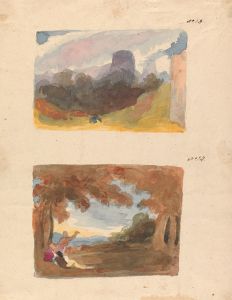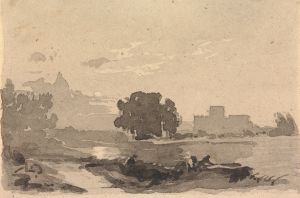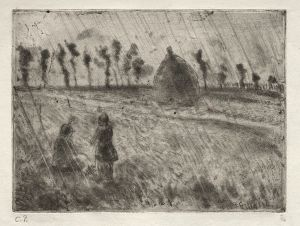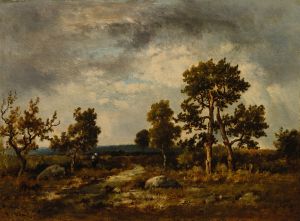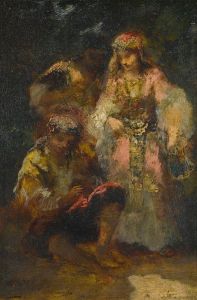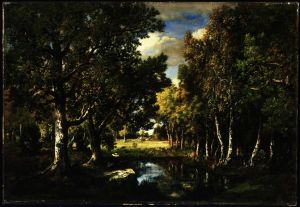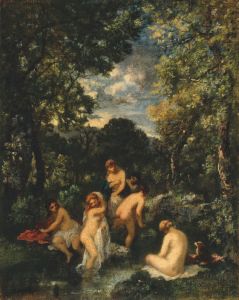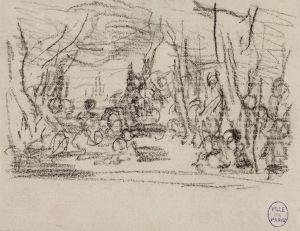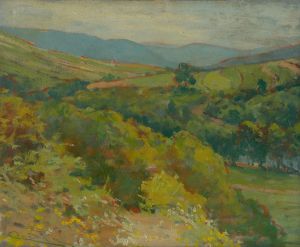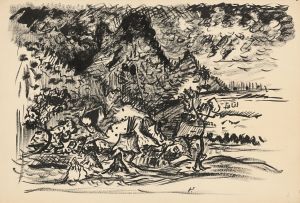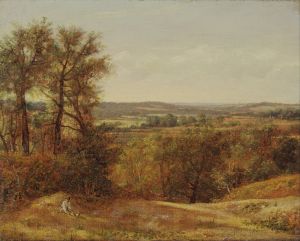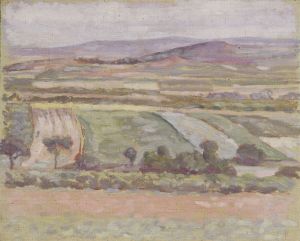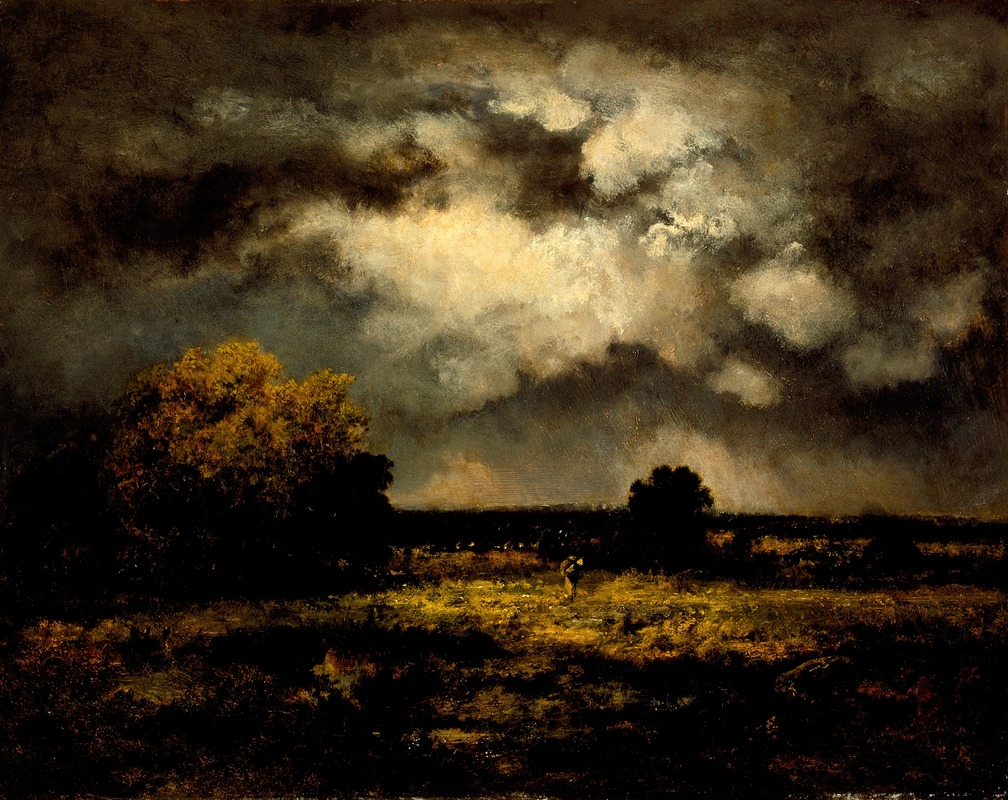
Stormy Landscape
A hand-painted replica of Narcisse-Virgile Diaz de La Peña’s masterpiece Stormy Landscape, meticulously crafted by professional artists to capture the true essence of the original. Each piece is created with museum-quality canvas and rare mineral pigments, carefully painted by experienced artists with delicate brushstrokes and rich, layered colors to perfectly recreate the texture of the original artwork. Unlike machine-printed reproductions, this hand-painted version brings the painting to life, infused with the artist’s emotions and skill in every stroke. Whether for personal collection or home decoration, it instantly elevates the artistic atmosphere of any space.
Narcisse-Virgile Diaz de la Peña was a prominent French painter of the 19th century, known for his association with the Barbizon School, a movement that emphasized naturalism and the depiction of landscapes. One of his notable works is "Stormy Landscape," which exemplifies his skill in capturing the drama and emotion of nature.
"Stormy Landscape" is a painting that reflects Diaz de la Peña's fascination with the untamed aspects of the natural world. The Barbizon School, with which he was closely associated, was known for its departure from the classical traditions of landscape painting. Instead of idealized scenes, artists like Diaz de la Peña focused on the realistic portrayal of nature, often painting en plein air, or outdoors, to capture the true essence of the environment.
In "Stormy Landscape," Diaz de la Peña employs a rich palette and dynamic brushwork to convey the turbulent atmosphere of an impending storm. The painting is characterized by its dramatic sky, filled with swirling clouds that suggest movement and energy. The use of light and shadow is particularly effective, as it highlights the contrast between the dark, ominous clouds and the lighter areas of the landscape below. This interplay of light and dark creates a sense of depth and intensity, drawing the viewer into the scene.
Diaz de la Peña's technique in "Stormy Landscape" reflects his mastery of color and texture. The brushstrokes are vigorous and expressive, capturing the raw power of nature. The foreground of the painting often features elements such as trees or rocks, rendered with a tactile quality that adds to the overall realism of the scene. These elements serve to anchor the composition, providing a sense of scale and perspective.
The emotional impact of "Stormy Landscape" is heightened by Diaz de la Peña's ability to convey the mood of the scene. The painting evokes a sense of awe and respect for the forces of nature, a theme that resonates with the Romantic sensibilities of the time. This connection to Romanticism is evident in the way Diaz de la Peña captures the sublime beauty of the storm, inviting viewers to reflect on the power and unpredictability of the natural world.
Diaz de la Peña's work, including "Stormy Landscape," played a significant role in the development of landscape painting in the 19th century. His approach influenced subsequent generations of artists, who continued to explore the relationship between humans and nature. The Barbizon School, with its emphasis on naturalism and direct observation, laid the groundwork for later movements such as Impressionism, which further expanded the possibilities of landscape art.
"Stormy Landscape" remains an important example of Diaz de la Peña's contribution to the art world. It showcases his ability to blend technical skill with emotional depth, creating a work that continues to captivate audiences. Through this painting, Diaz de la Peña invites viewers to experience the majesty and mystery of nature, a theme that remains relevant and compelling to this day.





